Alien Species: A Costly Catastrophe for Island Biodiversity
By Alexandra van der Geer in Paleobiology |
Paleobiology | The world's best vanilla comes from Madagascar, the mouflon is the national symbol of Cyprus, the dingo is the native wild dog of Australia, and Cattley guavas are grown in Hawaii. Few people are aware, however, that vanilla comes from the seedpods of an orchid (Vanilla planifolia) that is native only to Mexico, that mouflons (Ovis orientalis) are actually imported domestic sheep that became feral, that the dingo (Canis lupus dingo) came to Australia with migrants from Asia just a few thousand years ago, or that the Cattley or strawberry guava (Psidium cattleyanum) is actually a Brazilian fruit. In nearly every case where people settled on islands they took with them domestic animals and crops with which to start a new life far from home, in promising lands where nature appeared to be on their side. All went well and the islands' economies thrived …
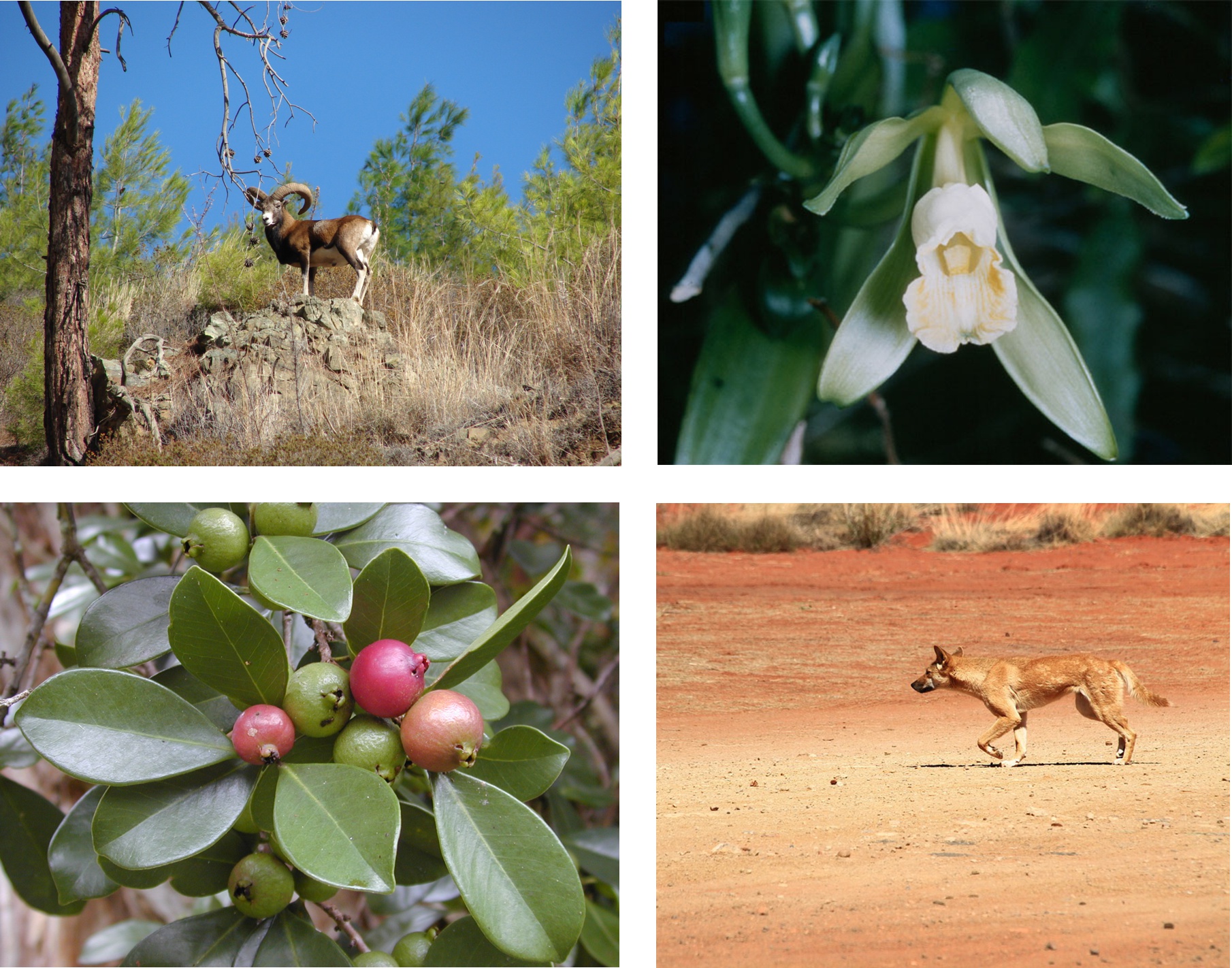
… or so they thought. Innocent and well-intentioned these introductions may have been, but it is now clear that in many cases they had unforeseen consequences. Islands are affected disproportionally by alien species of both animals and plants. This is partly because islands generally lack the natural competitors and predators that are an integral part of an alien species' native ecosystem. Sadly, almost half of the recorded extinctions on islands since the 16th century, and virtually all of the bird extinctions on Pacific islands, have been caused by introduced species. Furthermore, there are nearly as many invasive plant species as there are native plant species on many islands. Biodiversity is obviously hit hard, but so is the economy. On a global scale, billions are spent annually to get rid of introduced species and billions more are lost due to reduced productivity or spent on the protection of native species and preventive measures.
Most of these introduced species are directly beneficial to humans; they include livestock, game animals, crops, weeds, and timber. Another category of introduced species comprises those brought in for pest control, such as mongooses and snakes to catch mice and rats. In the 1930s, government entomologist Reginald Mungomery had the great idea of introducing cane toads (Rhinella marina) to Australia in an attempt to control beetle pests on sugar cane, as they had been successful elsewhere. The roots of the cane, itself an introduced crop plant, were being eaten by the grubs of native beetles and the toads were supposed to eat the grubs - but they didn't. These voracious toads (the world's largest: 10-15 cm long on average; the largest specimen measured 24 cm), which are native to Central and South America, soon went out of control. An entomologist colleague, Walter Froggatt, had already foreseen soon after the first introduction that "this great toad, immune from enemies, omnivorous in its habits, and breeding all year round, [would] become as great a pest as the rabbit or cactus." Their toxic skin and glands produce bufotoxin, a poison deadly to native and domestic animals alike. The giant toads not only feed on almost any terrestrial animal but also cause the death of predatory species that attempt to eat them. Unfortunately, this has led to a rapid decline in the northern quoll (Dasyurus hallucatus) and Mertens' water monitor (Varanus mertensi) populations. The cane toad is only one of the many examples of biocontrols that have gone horribly wrong.
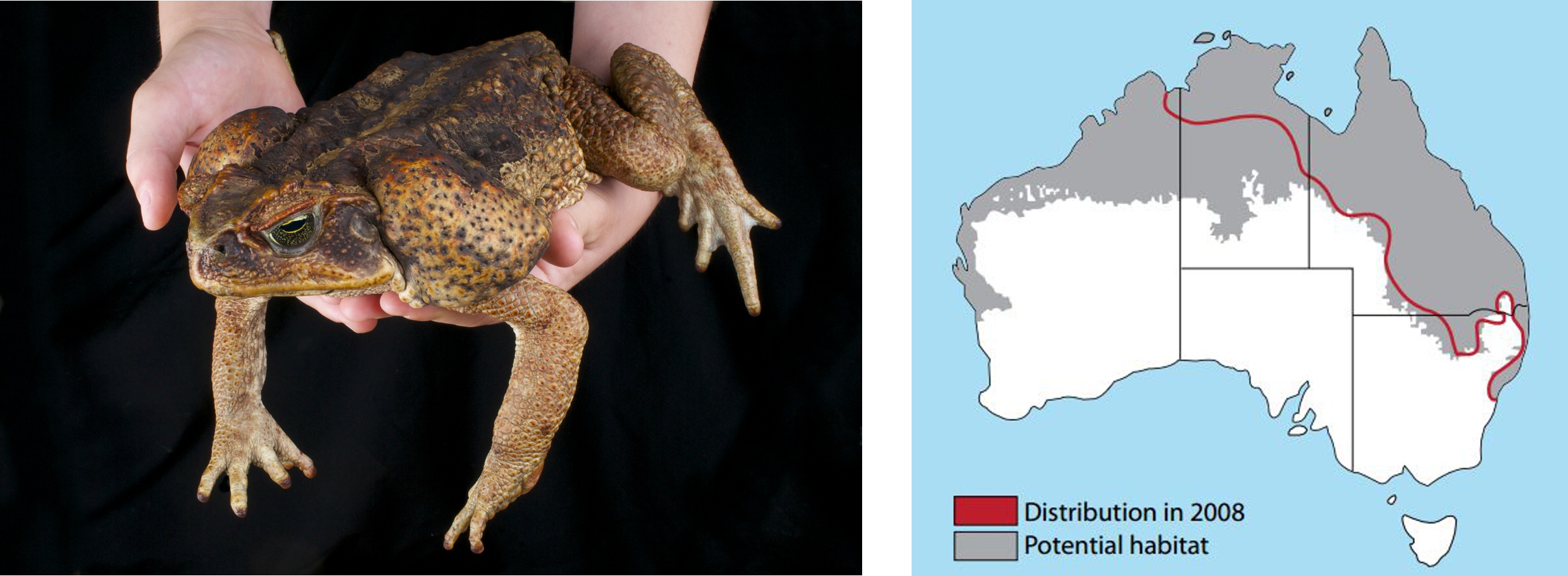
Clearly, the introduction of exotics has often led to the extinction of native species, especially on small, isolated islands. The invasive success of most alien animal species is greatly enhanced by their highly opportunistic foraging which enables them to survive on a great variety of plants and animals. Their versatile eating habits enable them to occupy all available habitats on the islands at densities that vary according to the habitat's suitability, food availability, and the presence of competitors and predators. They compete with native species for already limited resources and large herbivores also trample the native vegetation, reduce its biodiversity, and disturb the soil. Alien predators find easy prey and cats are the main offenders, accounting for 14% of modern bird, mammal and reptile extinctions on islands. Many native species evolved with no natural predators and consequently lost any anti-predator strategies such as fight and flee responses, high reproduction levels and, for birds, the ability to fly. As a result, just a few decades with alien predators around can annihilate hundreds of thousands (or even millions) of years of evolution. A sad illustration is provided by the Stephens Island wren (Traversia lyalli), a tiny flightless bird that once lived on New Zealand’s Stephens Island. In 1894, lighthouse keeper Mr. D. Lyall moved to the island and took with him his cat. The cat, named Tibbles, developed the habit of presenting its owner with wrens. Lacking any natural predators this unfortunate bird was not able to fly and its only escape was to run like a mouse, which it did very fast. It was beautifully adapted to the understorey niche of its island environment, with its flat skull, wide bill and distinctive leg bones. Lyall perceived that these birds were worth a closer investigation and gave specimens to the naturalist Henry H. Travers and he, out of curiosity, sent some to the prominent ornithologist Lord Walter Rothschild in England, who recognized them as a new species of wren. Rothschild dutifully named the species in honour of both gentlemen. However, within a year this brand new species became extinct, for which Tibbles is generally blamed but that is only part of the story. The island reportedly hosted a number of feral cats at that time, including offspring of Tibbles. In any case the first cats were introduced to Stephens Island at the beginning of 1894 and the last specimens of Traversia lyalli were presumably collected by Lyell in 1895. Searches for the bird later on did not find any evidence for the continued existence of this species.
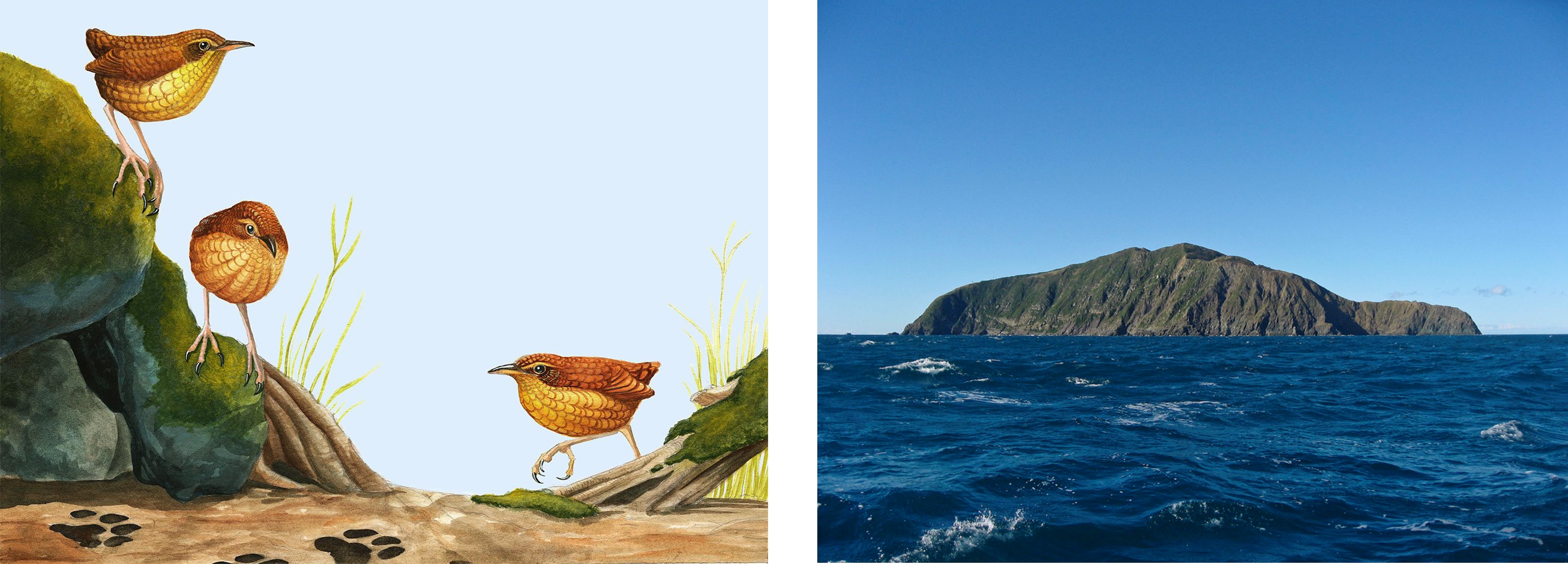
Yet another category of aliens comprises those that came along uninvited. Perhaps the worst of these are rats and mice. Small and insignificant as they may seem, they have been the cause of extinctions and near extinctions of endemic or local species. Invasive rats (Rattus rattus, R. norvegicus, R. exulans) are likely to have been responsible for the greatest number of extinctions on islands. In this respect, the remote Gough Island in the middle of the southern Atlantic Ocean is the stage for a particularly nasty drama going on currently. Here, introduced house mice (Mus musculus) feast not only on carcasses and eggs, but also on live albatross chicks. These youngsters often survive but are severely wounded and face a slow, painful death due to infection and loss of blood, or a crippled adult life. "Killer mice" was the nickname these mice were given in the popular media. This abundance of high-quality food enabled the mice to grow to almost double their ancestral size within about a hundred years .
Gough Island mice are no exception. On Henderson Island (Pitcairn Islands, South Pacific) the Polynesian rat (Rattus exulans) is held to have been possibly responsible for the local extinction of the sandpiper (Prosobonia sp.) and, like the mice, this rat has also doubled in size. This uninhabited island is a World Heritage site and one of the world's last two raised coral atolls with relatively unaltered ecosystems; it hosts a remarkable avian and floral biodiversity for its modest size of 37.3 km2. Chicks of two of its petrel species (Pterodroma ultima and P. neglecta) have been observed being eaten by the rats (Brooke, 1995). Invasive rats thus constitute a serious threat, perhaps worse than the infamous plastic rubbish that constantly accumulates on the island's shores, ending up in the birds' nests and in their stomachs.
It is not just animals that are a problem. People are often not aware of the presence of equally costly and invincible invasive weeds. European blackberries are delicious and nutritious so why not take them along to the other side of the world? At present, this prickly weed (Rubus fruiticosus species group) has infested about 9 million hectares of land in Australia and is listed as one of the worst weeds in Australia and New Zealand. Blackberries grow vigorously with entangled canes that can be up to about 10 m long; they compete aggressively with native plants by preventing other seedlings from growing and by forming dense canopies of shade.
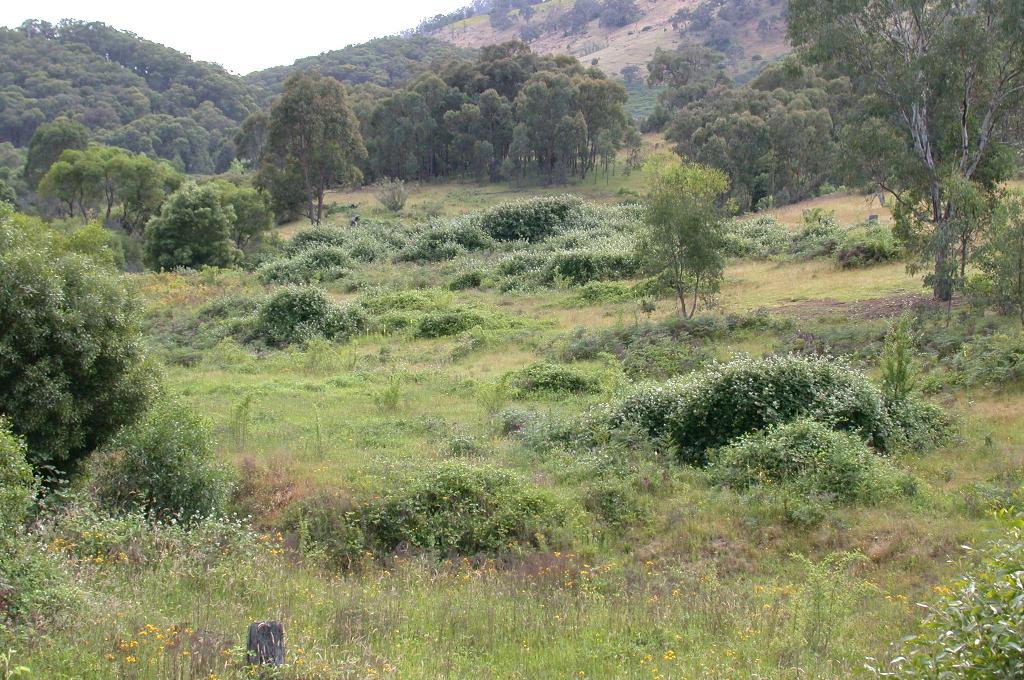
Giant salvinia (Salvinia molesta), an aquatic fern native to Brazil, is another of the worst invasive weeds. It has escaped from garden ponds and aquaria to successfully invade lakes and ponds on islands such as Hawaii, where its thick mats block the flow of water. Needless to say, it also blocks the light and capitalizes on all available nutrients.
These are the larger aliens. A complete army of microscopic aliens is also carrying out an invisible invasion of islands via people and animals on the move, ship ballast water, hull fouling, cargo containers, imported food species, plant imports, waste material, timber, and so on. The native forest birds of Hawaii, for example, now have restricted distributions due to alien diseases such as smallpox and avian malaria, brought in by a number of introduced mosquito species. These diseases are likely to have already been responsible for the extinction of many Hawaiian bird species since the first arrival of mosquitos in 1826.
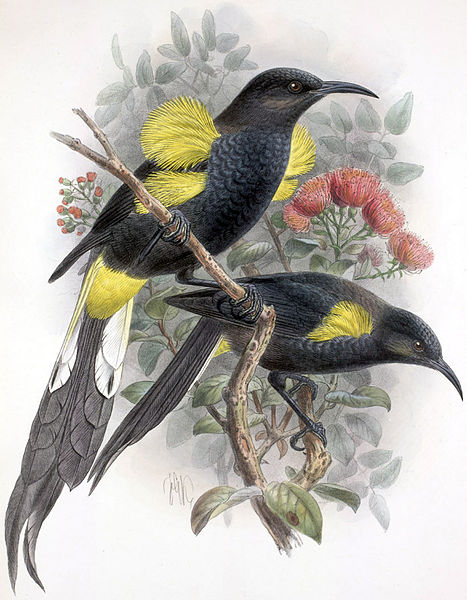
A clearer case comes from Christmas Island in the Indian Ocean. Its two native rats (Rattus macleari and R. nativitatis) both succumbed within less than ten years to a trypanosome infection, transferred by fleas from black rats that arrived with the ship SS Hindustan in 1899 . Island species may generally be more prone to alien diseases for a variety of reasons, such as their evolution in relatively safe isolation and the smaller host populations. This also applies to humans living in isolation: many islanders succumbed to influenza, smallpox, tuberculosis, and measles following their first contact with European explorers, and the impact of venereal diseases should also not be underestimated. The fate of the Aboriginal people of Tasmania following European colonization at the beginning of the 19th century is known all too well. While military campaigns, forced exiles, and individual acts of violence by Europeans were certainly devastating, the main cause of their decimation seems to have been the introduced diseases .
Charles Darwin (1859) proved to be right once again when he said "Let it be remembered how powerful the influence of a single introduced tree or mammal has shown to be."
Further reading on this topic:
- Global Invasive Species Database
- Long JL (2003) Introduced Mammals of the World: Their History, Distribution and Influence. CSIRO Publishing
- Marra PP and Santella C (2016) Cat Wars: The Devastating Consequences of a Cuddly Killer. Princeton University Press
Responses